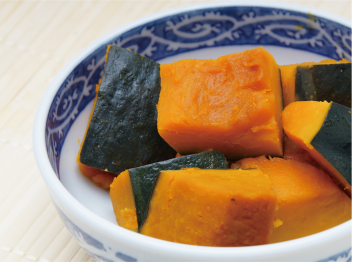
What is the biggest difficulty when cooking stewed dishes?
・The concentration of liquid seasoning and salt.
・The right time to turn off the heat.
・How deeply the flavor has penetrated the food.
Varying amounts of water in natural products (vegetables and meats) affect the flavor in st ewed dishes. Simply monitoring the concentration of liquid seasonings and salt is often not enough to ensure a good batch is produced.
Even after stewed dishes are removed from the heat, changes still happen. The flavors continue to merge and a deeper flavor is achieved. While some stewed dishes are served piping hot, others are allowed to cool before serving. The flavor profiles and salt content change with the temperature.
Cooled stewed dishes generally have a stronger flavor and hot stewed dishes generally have a lighter flavor. So when is the best time to turn off the heat once a dish is simmering? You can monitor the cooking liquid for salt concentration or the total concentration of the liquid.
Additionally you can test how deep the salt/seasonings have penetrated into the food by using the PAL-SALT PROBE directly on a solid piece of the stew. We have a variety of products in our line-up that utilize different methods for measuring liquid or solid type samples. Contact us today for more information on the different measurement methods available.
We recommend the PAL-1&PAL-SALT for measuring the liquid seasoning of stewed dishes.
If you would like to measure solid samples, we recommend the PAL-SALT PROBE



